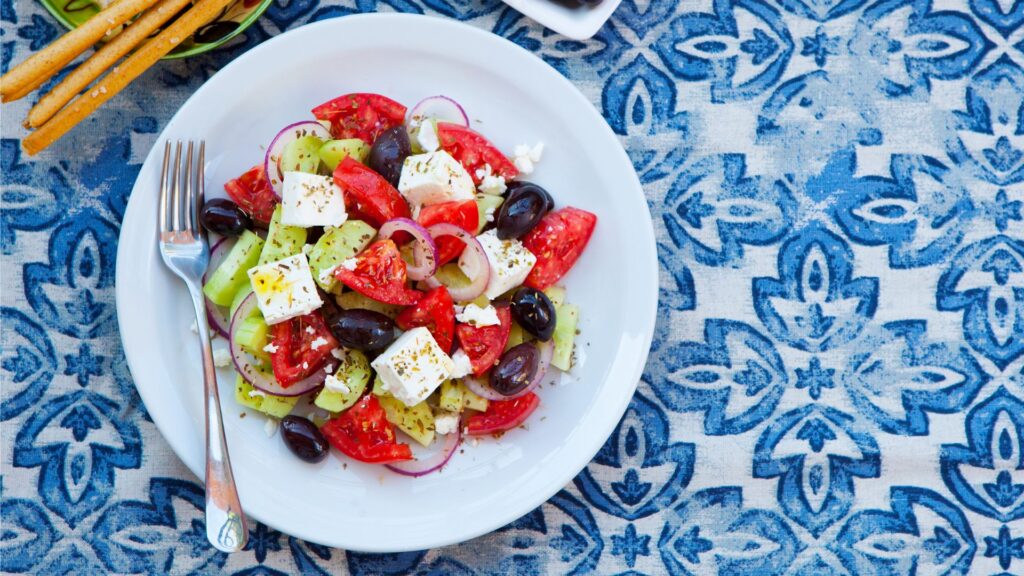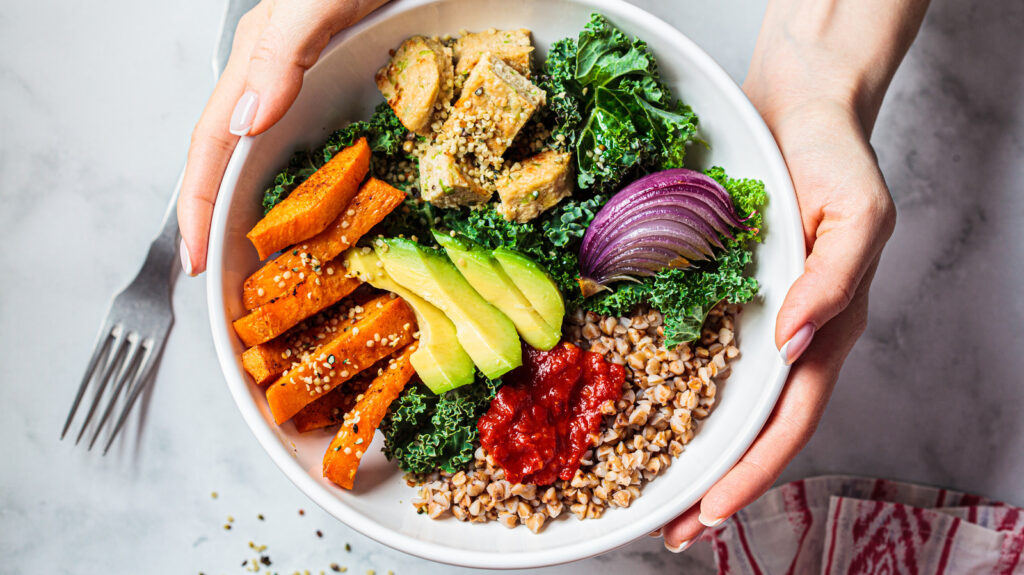When it comes to salads, few dishes offer the same vibrant flavors and textures as a classic Greek salad.
Bursting with freshness, this Mediterranean delight is a favorite for its simple yet delicious combination of ingredients.
But what truly elevates a Greek salad from good to great are the toppings.
In this article, we’ll explore the best Greek salad toppings that will take your salad game to new heights.

Embracing the Essence of Greek Salad
Greek salad, also known as horiatiki, is a timeless dish celebrated for its wholesome ingredients and robust flavors.
Traditionally, it comprises crisp lettuce, juicy tomatoes, crunchy cucumbers, tangy olives, creamy feta cheese, and a drizzle of olive oil.
However, it’s the additional toppings that allow for personalization and creativity, transforming a simple salad into a culinary masterpiece.
Fresh and Flavorful Vegetables
At the heart of any Greek salad are the vegetables.
Opt for ripe, seasonal produce to maximize flavor and nutrition.
Begin with a base of crisp romaine lettuce or peppery arugula, then layer on sliced tomatoes, cucumbers, and red onions for a refreshing crunch.
For an added burst of sweetness, consider incorporating colorful bell peppers or tangy banana peppers.
Elevating with Protein-Packed Additions
To make your Greek salad more substantial, add protein-rich toppings that satisfy hunger and provide essential nutrients.
Grilled chicken, tender shrimp, or flaky salmon are excellent options for meat lovers, while vegetarians can enjoy the nutty flavor of chickpeas or the creaminess of avocado slices.
These additions not only enhance the salad’s texture but also make it a satisfying meal on its own.
Enhancing with Mediterranean Flair
Greek cuisine is renowned for its bold flavors and aromatic herbs.
Elevate your salad with a sprinkle of dried oregano, a pinch of crushed red pepper flakes, or a handful of briny capers.
Fresh herbs like mint, basil, and parsley add brightness and depth to the dish, infusing it with Mediterranean flair.
Don’t forget to season with salt and pepper to taste, allowing the ingredients to shine.

Adding Creaminess with Feta Cheese
No Greek salad is complete without the creamy tang of feta cheese.
Crumbled over the top or cubed and scattered throughout, feta adds richness and depth to every bite.
Opt for high-quality feta made from sheep’s milk for an authentic taste experience.
Its briny flavor perfectly complements the freshness of the vegetables, creating a harmonious balance of textures and flavors.
Elevating with Kalamata Olives
Kalamata olives are a staple in Greek cuisine, prized for their meaty texture and rich flavor.
These dark purple olives add a burst of umami and a hint of saltiness to the salad, elevating its taste profile.
Whether whole or sliced, kalamata olives are a delicious addition that brings a taste of the Mediterranean to every forkful.
Drizzling with Extra Virgin Olive Oil
A generous drizzle of extra virgin olive oil is the crowning glory of any Greek salad.
Rich in monounsaturated fats and antioxidants, olive oil not only enhances the salad’s flavor but also provides numerous health benefits.
Choose a high-quality olive oil with a fruity aroma and peppery finish to accentuate the freshness of the ingredients.
The golden liquid binds the flavors together, creating a luscious dressing that coats every leaf and vegetable.
Conclusion:
In conclusion, the key to a memorable Greek salad lies in its toppings.
By incorporating fresh vegetables, protein-packed additions, Mediterranean herbs, creamy feta cheese, kalamata olives, and extra virgin olive oil, you can elevate your salad game to new heights.
Experiment with different combinations and variations to discover your perfect blend of flavors.
Whether enjoyed as a light lunch or a side dish, a well-crafted Greek salad is sure to delight your taste buds and nourish your body.

FAQs:
Q1: Can I make a Greek salad ahead of time?
Yes, Greek salad can be prepared in advance.
However, it’s best to dress the salad just before serving to prevent the vegetables from becoming soggy.
Q2: Can I customize the toppings to suit my dietary preferences?
Absolutely! Feel free to swap out ingredients or omit toppings based on your dietary needs and preferences.
Greek salad is highly adaptable and can accommodate various dietary restrictions.
Q3: Are there any vegan alternatives to feta cheese for a plant-based Greek salad?
Yes, there are several vegan feta cheese alternatives available in stores, or you can make your own using tofu or cashews.
You can also omit the feta altogether and add extra olives or avocado for creaminess.
Q4: Can I add grains like quinoa or bulgur to my Greek salad for extra texture?
Certainly! Adding cooked grains like quinoa or bulgur is a great way to add texture and make your Greek salad more filling.
Just toss them in with the other ingredients before serving.
Q5: What’s the best way to store leftover Greek salad?
Store leftover Greek salad in an airtight container in the refrigerator for up to two days.
Be sure to keep the dressing separate if possible to maintain the salad’s freshness and crunch.
